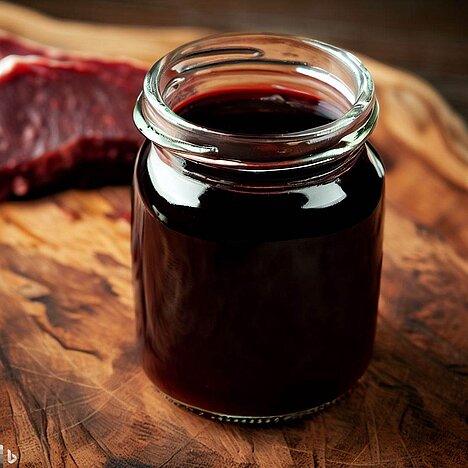Pig's blood

What is pig's blood?
Pig blood is the blood of pigs that is drained during slaughter. It contains various components such as red blood cells, white blood cells, platelets and plasma. Pig blood is rich in proteins, riboflavin, iron, phosphorus and other minerals that help maintain and repair a dog's muscles and tissues.
What are the benefits of pig's blood for dogs?
Pig's blood can have several benefits for dogs when fed in moderation and in good quality. For example:
- It can promote blood formation and oxygen transportation in the body as it contains a lot of iron.
- It can strengthen the immune system as it contains antibodies and other defense cells.
- It can aid digestion as it contains enzymes and other digestive factors.
- It can improve skin and coat health as it contains biotin and other B vitamins.
What are the disadvantages of pig's blood for dogs?
Pig's blood can also have some disadvantages for dogs if it is fed in excessive quantities or of poor quality. For example:
- It can lead to overweight or obesity as it is very high in calories.
- It can lead to diarrhea or vomiting as it is very high in fat and some dogs do not tolerate it well.
- It can lead to pancreatitis, a severe inflammation of the pancreas that can be life-threatening.
- It can lead to infection with the Aujeszky's virus, a virus that is harmless in pigs but can be fatal in dogs.
What should you look out for if you want to feed pig's blood to your dog?
If you want to feed pig's blood to your dog, there are a few things you should bear in mind:
- Only buy pig's blood from a trustworthy supplier or butcher who can guarantee that the blood is fresh and free from pathogens.
- Heat the pig's blood to at least 70°C before feeding to kill any germs.
- Only feed small amounts of pig's blood as a supplement to your dog's normal food. A rule of thumb is about 1 teaspoon per 10 kg of body weight per day.
- Observe your dog after feeding pig's blood for possible signs of intolerance or illness such as diarrhea, vomiting or lethargy. If you notice such signs, stop feeding pig's blood immediately and seek veterinary advice.
Pig's blood can have both advantages and disadvantages for dogs. It depends on how much, how often and in what quality you feed it to your dog. If you decide to give your dog pig's blood, you should follow the tips above and always pay attention to your dog's reaction. This way you can ensure that your dog can enjoy the positive effects of pig's blood without risking the negative ones.
If you notice any signs of hypersensitivity or poisoning in your dog, you should see your vet immediately. We are not a substitute for a vet, but we try to be as accurate as possible. Every dog reacts differently and we recommend you get a second opinion or consult your vet if in doubt.
Stay healthy and take good care of your four-legged friend!😊